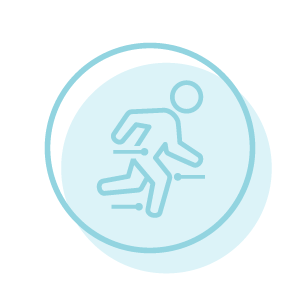What is knee osteoarthritis?
Knee osteoarthritis is a degenerative joint condition. It is a “wear and tear” process involving the joint cartilage. As the wear process progresses it produces abnormal joint loading which in turn leads to the gradual onset of pain, deformity and loss of function.
What can cause it?
Many factors can contribute to knee osteoarthritis:
- Age. With increasing age the muscles which provide support to the joint weaken. This places greater forces across the joint and can accelerate the degenerative process leading to osteoarthritis.
- Weight. An increased body mass index places more stress across the joint and therefore can lead to osteoarthritis. Likewise in such situations, a joint replacement will loosen and fail quicker due to the increased forces placed across it.
- Pre-existing joint conditions. Conditions such as Rheumatoid arthritis, psoriatic arthritis and gout.
- Previous injury or surgery. A history of significant trauma. This may involve previous soft tissue or bony injuries. Previous extensive soft tissue or bony surgery can also lead to osteoarthritis.
- Lifestyle. Activities which frequently place large twisting loads across the knee can also cause osteoarthritis.
- Family history. Sometimes osteoarthritis can run in families.
- Gender. Osteoarthritis of the knee is slightly more common in females.

What are the symptoms and signs?
There is an associated broad spectrum of symptoms ranging from a low-grade activity-related, dull ache through to a more debilitating, constant ache which can result in sleep disturbance, pain at rest along with significant compromise of activities of daily living. Often one’s quality of life is poor as a result of the ongoing symptoms. Symptom progression can often be monitored by a careful assessment of one’s painkiller requirement and walking distance. Associated mechanical symptoms may include stiffness, swelling, locking, clicking and giving way.
Objective signs
In my office, this may include:
an associated limp along with muscle wasting and deformity in and around the joint, suggestive of long-standing joint dysfunction. There may be significant joint line tenderness along with a reduced range of movement. A meticulous examination of the soft tissue around the joint along with the nerve and blood supply to the limb will also be performed.

What investigations may be required?
Weight-bearing plain radiographs are a quick and effective way of confirming arthritis in a joint. In the early stages when there is inflammation with no damage to the joint they may be normal. Most people, however, present when there is some structural damage.
The following are features of arthritis on a plain radiograph:
- Decreased joint space
- Subchondral sclerosis
- Subchondral cysts
- Osteophytes
- Deformity (change in knee shape)
Can the problem get worse?
The problem can certainly progress and therefore careful clinical and x-ray monitoring is important.
Potential complications
It should be borne in mind that complications may result from a condition with or without surgery. Complications of non-operative treatment include worsening pain, increased stiffness, increasing deformity, adjacent joint disease, pain elsewhere, for example in the ankle, hip or lower back (due to abnormal gait and compensatory mechanisms). Complications can occur with any type of surgery.
Potential general complications: risks and complications of anaesthesia, bleeding, infection, blood clots, the need for further surgery, persistent pain, complex regional pain syndrome and wound healing problems, genito-urinary complications and cardiovascular complications.
Potential complications which are specific to the surgery mentioned above include nerve damage/foot drop, intraoperative fracture, stiffness, instability, loosening, wear, the need for revision surgery and non-resolution of symptoms, partial resolution of symptoms, leg length discrepancy.
Treatments
There is no one treatment that has a reliably successful, quick and easy cure for arthritis. Therefore researchers and doctors are constantly looking for new and better ways of treating arthritis. Many treatments have come into fashion and then gone away over the years once results had shown that the initial promise was premature and misplaced.
At The London Hip and Knee Clinic we do not promote or discourage new treatment options for arthritis. We would, however, advise a cautious approach to relatively untested treatment modalities with little or no evidence to back their use. Patients undergo these treatments at their own risk.

Non-surgical management
Non-surgical management of knee arthritis aims to relieve pain and return to full activity including sports whenever possible. It is likely to be most effective in the early stages of the condition.
It should always be the first line of treatment. Options include:

Surgical management
This decision to undergo surgery a very individualised one. Surgery is to improve pain, alignment and function. As a rule, it is always a last resort once conservative measures have been exhausted.
Based on your unique clinical picture your surgeon will advise you on the best type of surgery available to suit your individualised requirements. Options include:
Postoperative period and recovery
Remember that below is a guide to recovery and that everyone heals at different rates and some people do take longer. Use this information to help you understand your condition, possible treatment and recovery. The timeframes given below are a minimum, it is important that you appreciate this when considering surgery as your healing and recovery may take longer.
After your operation, a routine enhanced programme of recovery will commence. The main parallel work streams of this programme are as follows:
FAQs
Stop using a stick once you feel comfortable to do so. Do not worry if this takes a bit longer since we all recover at different rates. Your surgeon will advise you at your follow up appointment.
